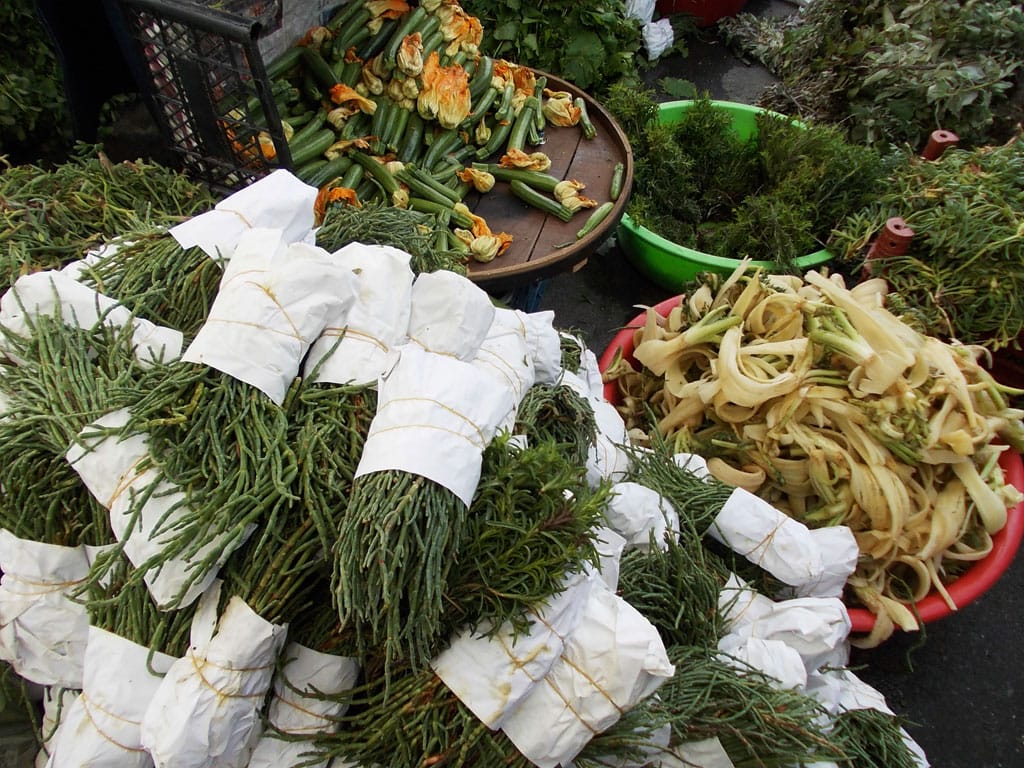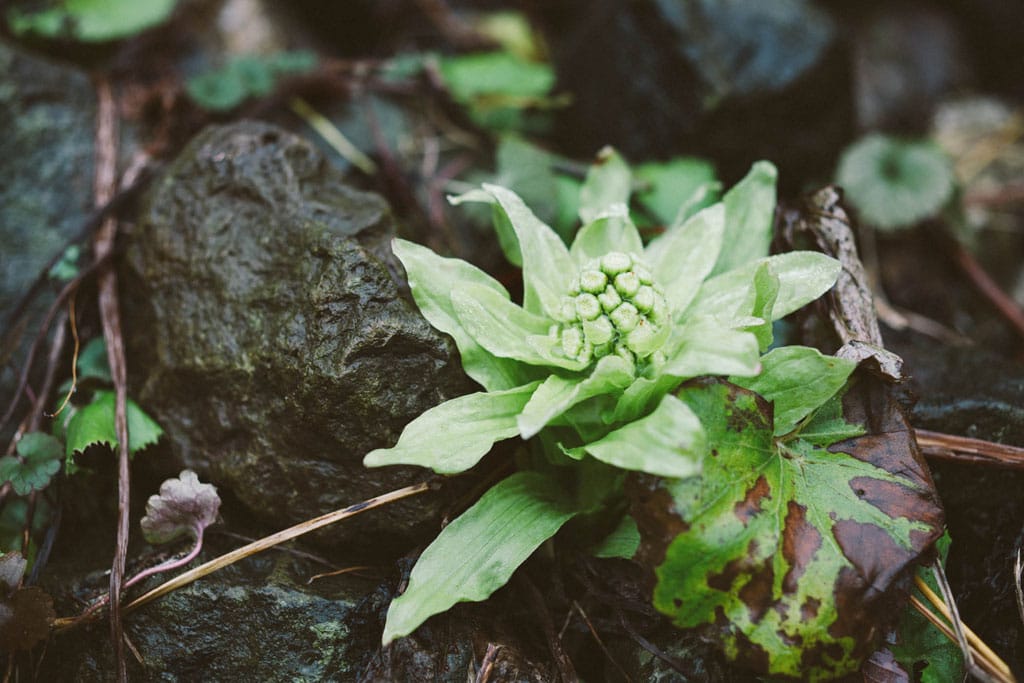They weren’t easy to spot at first: tiny green shoots with reddish roots, scarcely an inch high, poking out of the mud along the banks of a brackish stream near the Aegean town of Alaçatı. From these unpromising beginnings come a dish known to nearly every patron of a Turkish meyhane: nutrient-rich deniz börülcesi (samphire), typically served boiled and dressed with olive oil, lemon, and garlic.
The simple word ot, which translates to “herb” or “weed,” doesn’t do justice to the important – and delicious – role these wild greens play in the cuisine of Turkey’s Aegean region. Though most commonly served as zeytinyağlılar, dishes “with olive oil” like the classic deniz börülcesi salad, their versatility was on full display at the recent Alaçatı Ot Festivali, an annual celebration of all things leafy and green.
Stands set up at the entrance to town were piled high with homemade ot-themed eats, from ısırgan (nettle) bread to kekik (thyme) honey, zeytinyağlı radika (chicory with olive oil) to mallow-flower jam. Some dishes had a long history: Nurcan Hanım, a tour guide selling her wares as part of a local women’s cooperative, explained that her cağla badem arapsaçı bakla (green beans with green almond and wild fennel) is a 200-year-old recipe brought over from Crete along with the island residents relocated to Turkey during the population exchange of the 1920s. Others were new inventions, like a green-tinted nettle baklava that tasted disappointingly akin to the regular version of the popular sweet.
The simple word ot, which translates to “herb” or “weed,” doesn’t do justice to the important – and delicious – role these wild greens play in the cuisine of Turkey’s Aegean region.
More distinct was karabaş otu macunu, a sweet, nutty paste made from lavender flowers, sugar and sesame seeds and said to soothe headaches and impart energy. The brightly colored flowers grow wild in the hills around Alaçatı and are often used locally to make jam, Sebla İleri, the president of the Alaçatı Art and Culture Association, explained on a foraging tour held as part of the Ot Festivali.
“You can imagine how much karabaş otu you have to pick to make just one jar of jam,” İleri said. And therein lies the quandary for fans of Aegean otları: promotional events like the Ot Festivali, which packed the small town uncomfortably over an early April weekend, may be making the plants a little too popular.
“Since we started promoting wild greens, people are gathering so many,” İleri said, pointing out the early spear-like shoots of yaban kuşkonmaz (wild asparagus) on the hillside. “They’re delicious fried in a pan with onions and put in an omelet, but though they were very common 10 or 20 years ago, they’re now hard to find.” Same goes for şevketibostan (milk thistle), which İleri says is now so popular among chefs and home cooks that “it goes for 20 TL [$7] per kilo at the market now; it’s like gold for the farmers who find it on their land.”
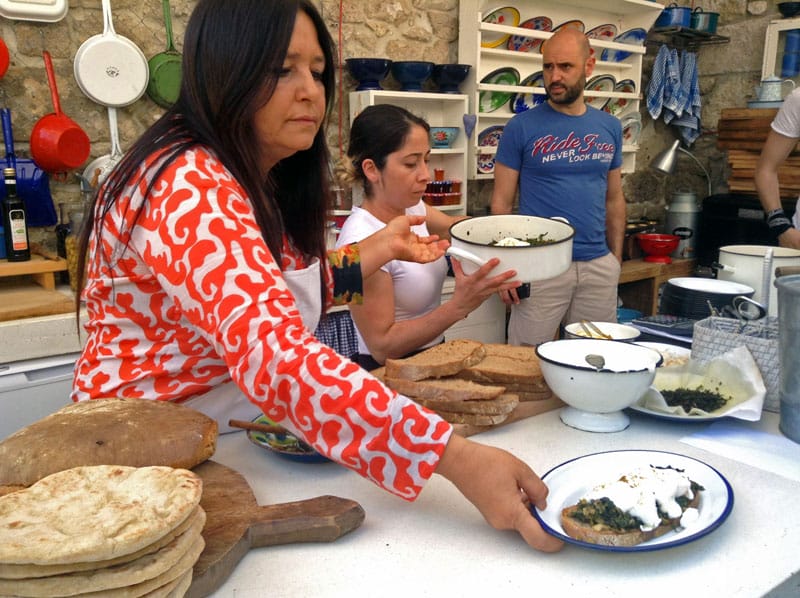
Radika, a common ingredient in the Aegean culinary canon, is also becoming overharvested, according to Ayşe Nur Mıhçı, chef-owner at the popular Alaçatı restaurant Asma Yaprağı. During a cooking workshop as part of the Ot Festivali, she demonstrated how to get the best out of the bitter green by sautéing it slowly with fresh onion and garlic, salt, black pepper, and a smattering of spicy red pepper. Mıhçı then served the cooked vegetable sandwiched between a slice of homemade bread and a pair of poached eggs, topped with garlicky village yogurt so thick it hangs from the spoon, cumin-infused butter and crunchy bits of fried radika. The chef wasn’t adding to the overharvesting problem, though: Asma Yaprağı’s radika comes from the restaurant’s own garden.
Teaching people how to cultivate wild greens is one way to make their use in cooking more sustainable. So is education about the plants. “People don’t know how what they see at the supermarket looks in nature, whether they’re eating the flowers, the leaves or the roots,” says İleri – and about proper harvesting practices.
Turkey boasts some 12,000 types of plants, 30 percent of them endemic species, but that biodiversity “is at risk if we don’t gather sustainably,” according to agricultural researcher Dr. Ayfer Tan. In a festival talk before the foraging outing, she explained how wild plants shouldn’t be harvested in large quantities, pulled up by their roots, or gathered before they have flowered – and thus been able to spread their seeds. “Sustainable harvesting means ensuring there will be enough plants to pick the next year too,” Tan said.
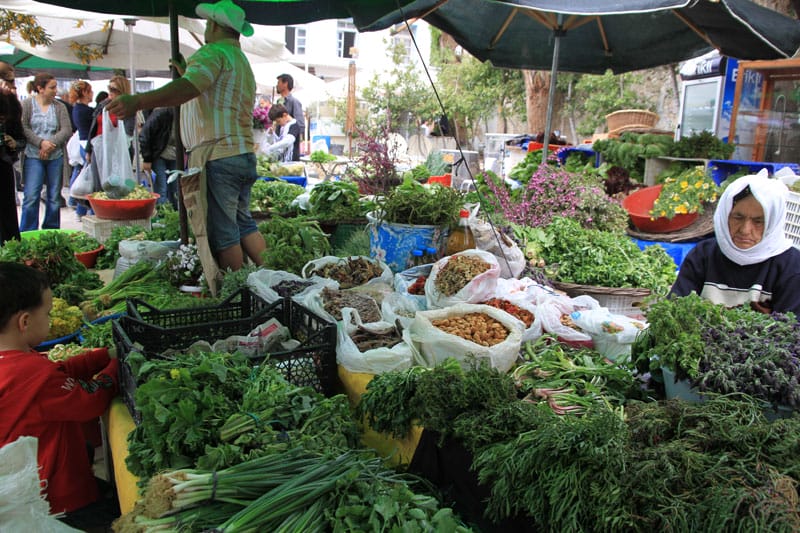
The Alaçatı municipality’s efforts to preserve the area’s ot culture include setting up a demonstration garden in town to show how wild greens can be cultivated, but not all of the neat rows of plants there appeared to be thriving. A visit to the garden one morning during the Ot Festival found no one around except for two women on a day trip from nearby İzmir, sitting in the shade of a gazebo and unpacking all the neat containers that held their picnic lunch: olives, cheese, sliced cucumbers, walnuts, figs, Pringles (“homemade!” they joked). Putting a conspiratorial finger to her lips, one of the women checked to make sure no one was coming before tiptoeing into the garden to pick sprigs of fresh thyme and wild fennel to pair with their cheese.
While snacking, they griped good-naturedly about the event they’d traveled to attend: “This is supposed to be an ot festival; where are all the greens?” But what of all the food in the marketplace – the exotic-seeming nettle börek, stewed radish greens and wild-fennel jam? “Oh, that’s just gida (food) – nothing we can’t make at home.”
 May 2, 2023 Spring Gone Wild
May 2, 2023 Spring Gone Wild
One of the great joys of spring in Japan is anticipating the appearance of sansai, or […] Posted in Tokyo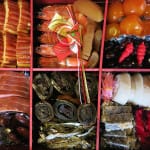 January 1, 2021 Osechi Ryori
January 1, 2021 Osechi Ryori
‘Tis the season of the Japanese New Year’s trinity: osechi, oseibo and nengajo. Like […] Posted in Tokyo April 30, 2019 Meet the Vendors
April 30, 2019 Meet the Vendors
Being a street butcher in Naples is not for the faint of heart. “Rain, sun, wind, heat, […] Posted in Naples
Published on April 27, 2016
Related stories
May 2, 2023
TokyoOne of the great joys of spring in Japan is anticipating the appearance of sansai, or mountain vegetables. When cherry blossoms begin to flutter on warming breezes, hikers take to the hills to forage for the first wild edibles. Supermarkets mount special displays of packaged (and unfortunately often hot-house-raised) young sprouted leaves, shoots and tubers.…
January 1, 2021
Tokyo‘Tis the season of the Japanese New Year’s trinity: osechi, oseibo and nengajo. Like newsy Christmas cards, the nengajo is a recap of family or personal news mailed in postcards during the weeks preceding the end of the year and efficiently delivered all over Japan promptly on January 1. The winter gift-giving season is in…
April 30, 2019
NaplesBeing a street butcher in Naples is not for the faint of heart. “Rain, sun, wind, heat, cold… being on the street seven days a week means knowing how to face every type of weather,” says Gaetano Iavarone. He is part of the invincible team behind Macelleria Iavarone, a butcher shop in Naples’ Sant’Antonio Market…







































